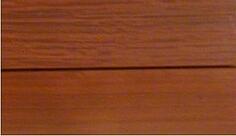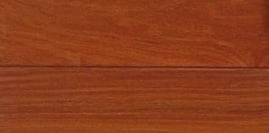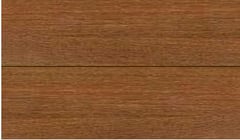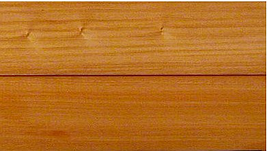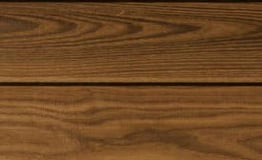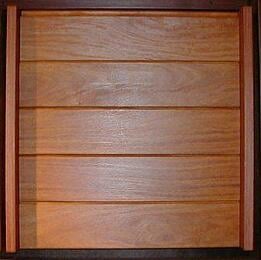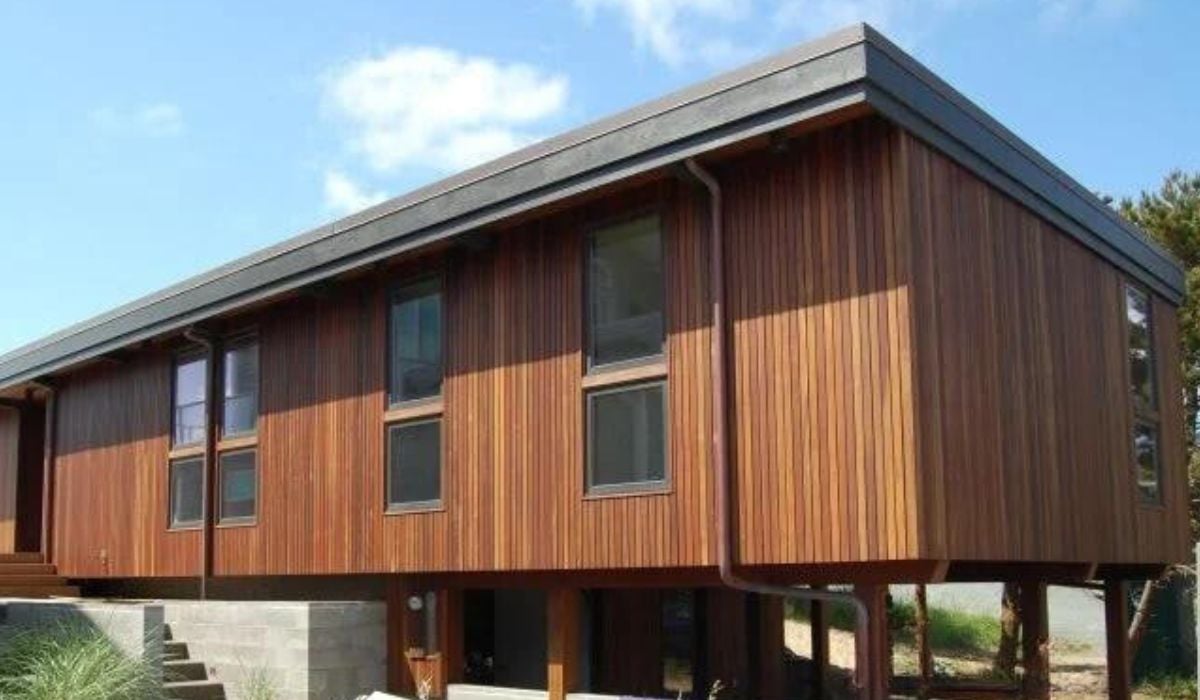
CLIMATE-SHIELD RAINSCREEN® - THE ULTIMATE WOOD RAINSCREEN SIDING SYSTEM
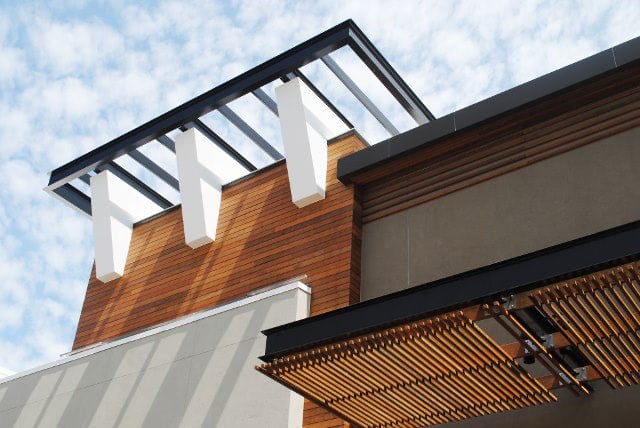
The remarkable design of the Climate-Shield® Rainscreen System™ represents a quantum leap in exterior siding rainscreen system technology. It combines ancient 'tried and true' rainscreen methods with modern technology to create a healthy, sustainable, energy efficient, and weather resistant rainscreen wood siding system.
Use the Climate-Shield Rainscreen Wood Siding System to create sustainable designs that are beautiful, effective and highly durable. Because the entire rainscreen system is exceptionally well engineered and fully patented, you can rest assured that the integrity and performance of your project will endure for many years.
There are many rainscreen clips popping up on the market. However, none of them provide a comprehensive system with versatile components to ensure you can design and build the best sustainable rainscreen system. Climate-Shield offers many system components that are ideally suited for your unique project design.
- No furring strips needed over plywood or OSB exterior sheathing.
- Save the cost of furring materials and labor costs for furring.
- Save valuable installation time.
- Creates a higher performance, better ventilated rainscreen wall cavity.
Climate-Shield Rainscreen Clip Advantages
The Climate-Shield CS2 and CS10 Rainscreen Clips offer a number of benefits compared to other rainscreen fastening methods for wood siding.
• Wide flange of the Climate-Shield rainscreen clip with two stainless steel screws allows for quick, secure fastening
• Heavy-duty marine-grade aluminum alloy used to manufacture the Climate-Shield rainscreen clip is an extremely durable and long-lasting material.
• There is no galvanic action between the Climate-Shield rainscreen clips and the stainless steel screws
• The smooth, clean design of the Climate-Shield rainscreen clip minimizes sharp edges and makes it easier and safer to handle on-site
• The Climate-Shield rainscreen clip is manufactured in the USA to the same tolerances used in the aircraft industry
• The consistent sizing of each rainscreen clip ensures a uniform spacing for your wall cavity
• The Climate-Shield Rainscreen Clip eliminates the need for furring strips
• The Climate-Shield Rainscreen Clip is a true hidden fastener for your wood siding
Watch our 6-minute video comparing siding rainscreen systems.
Discover why Climate-Shield is ideal for most siding projects! Click the image to watch now.
Find design inspiration and rainscreen technical information in this free whitepaper.
Download The Ultimate Guide to Wood Rainscreen Siding today.
Meet the Climate-Shield CS2 Rainscreen System
The CS2 family of Climate-Shield rainscreen components is the most robust rainscreen system. The CS2 system is ideal for all types of residential and commercial wood rainscreen designs over plywood or OSB sheathing. The CS2 system creates a 3/4" rainscreen gap in the wall cavity, considered the ideal depth by building scientists. There are also additional components available for the CS2 that are ideal for installations over masonry, concrete and exterior gypsum.
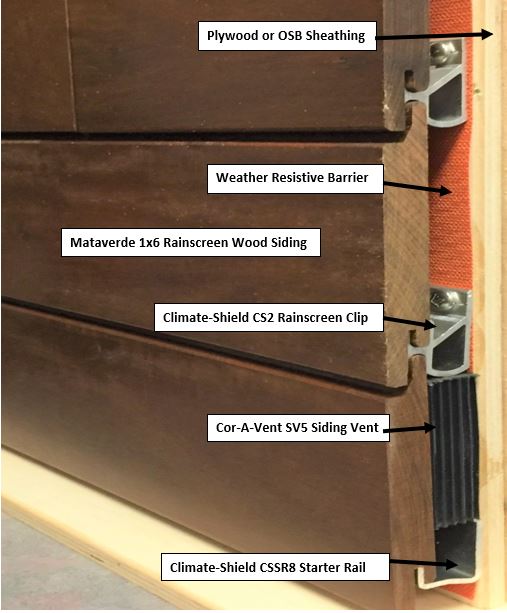
Typical Climate-Shield CS2 wood rainscreen wall assembly over plywood sheathing and weather resistive barrier
Where to use the Climate-Shield CS2 rainscreen system:
You can’t go wrong with the CS2 system on any residential or commercial project design that has plywood or OSB exterior sheathing. The CS2 system components automatically set a ¾” rainscreen gap without the need for furring strips. The pressure equalized, open joint, back ventilated design affords the fastest drying times to keep the wall cavity clear of bulk water and moisture. The CS2 rainscreen components work great for siding and soffits. CS2 is engineered to withstand hurricane zone requirements.
RELATED: RAINSCREEN DESIGN VALUES
Best Rainscreen Design Applications for Climate-Shield CS2 System:
|
What Rainscreen Components are available for the CS2 Family?
- The Climate-Shield CS2 rainscreen clip is the heart of the CS2 family. The CS2 clip has been described by architects as elegantly simple. And rightfully so. The CS2 rainscreen clip eliminates the need for furring strips over plywood or OSB. CS2 rainscreen clips install securely with two stainless steel screws.
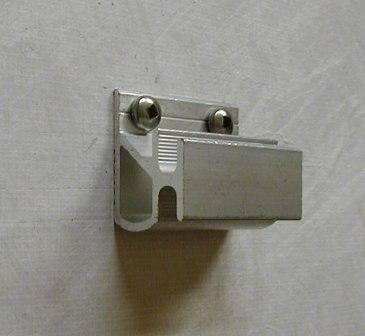
- The CSSR8 horizontal starter rail is installed at the bottom of a horizontal siding wall assembly. This eight-foot time saving component installs quickly and level for horizontal siding installations. Once you set this easy-to-install component level, all your siding will The CSSR8 starter rail has predrilled holes for easy mounting and weep holes for quick water drainage at the bottom of the wall cavity.
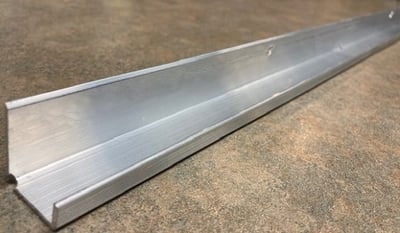
- The CSVSR8 vertical starter rail is installed at the bottom of the wall assembly for vertical installations. The CSVSR8 also has predrilled holes for easy mounting and ¼” weep holes for rapid bulk water drainage.
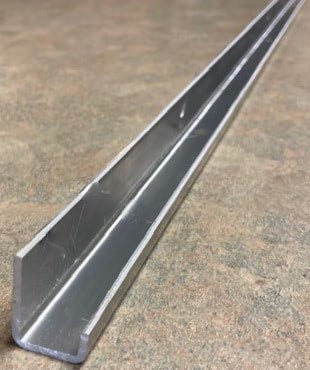
- Cor-A-Vent SV5 is a ¾” thick siding vent that installs directly above either the vertical or horizontal starter rail. At the bottom of the wall cavity, it minimizes the potential for insects from entering the wall cavity (rainscreen gap). At the top of the wall assembly, the SV5 siding vent is perfect for ventilation and prevents insect penetration.
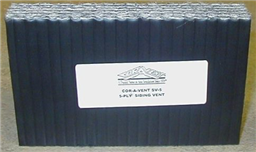
- The CSAC8 Rainscreen Attachment Channel is ideal to create a fastening point for the CS2 rainscreen clips on masonry walls, CMU, exterior gypsum, and other wall assemblies where there is no plywood to fasten the CS2 rainscreen clips to directly.
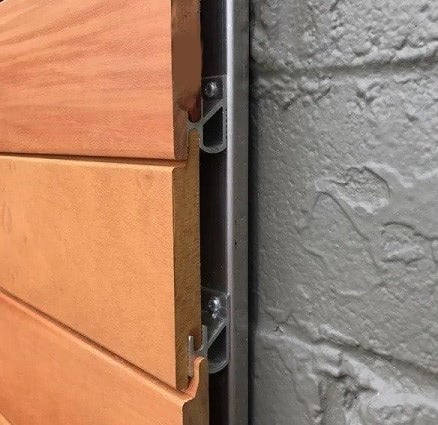
- CSZG Climate-Shield Z-Girt is ideal to create a secure fastening point for CS2 clips on wall assemblies with exterior insulation or to meet elevation requirements. Climate-Shield Z Girts are available with web lengths up to 8” to meet your project needs.
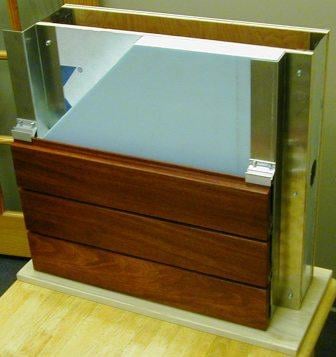
Check out some amazing wood rainscreen designs on commercial projects.
Download the Wood Rainscreen Commercial Projects Portfolio today.
ADDITIONAL RESOURCES FOR CLIMATE-SHIELD CS2 SYSTEM:
CS2 Design Details and Specifications
Climate-Shield CS Rainscreen Design Values
Climate-Shield Installation Guidelines
Wood Siding Options for use with Climate-Shield
DOWNLOAD the Ultimate Guide to Building Green with Wood Rainscreen
Looking for pricing for a cladding project? Request a rainscreen siding quote today.
Meet the Climate-Shield CS10 Rainscreen System
The Climate-Shield CS10 rainscreen clip is smaller than the CS2 clip, it is still exceptionally strong, dependable, durable, and very versatile. The CS10 rainscreen clip creates a 10 mm (approx. 3/8”) rainscreen gap and installs quickly with one stainless steel screw. The low profile of the CS10 clip makes it ideal for remodeling and re-siding projects, as well as soffits.
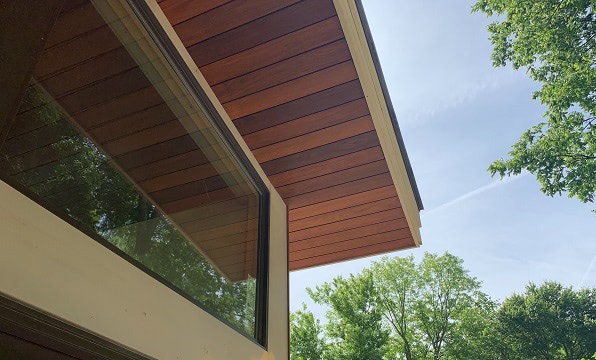
Climate-Shield CS10 fasteners have a low profile, ideal for soffits and siding
Where to use the Climate-Shield CS10 rainscreen system:
You can’t go wrong with the versatile CS10 system on any residential project that has plywood or OSB exterior sheathing. CS10 is ideal for soffits and horizontal siding installations. Recladding and remodeling projects go smoothly with the CS10 rainscreen clip and CS10SR starter rail.
Here’s why. Because the CS10 rainscreen gap is shallower, the siding face projects only 1-1/16” off the building envelope. This is less than the projection of about 95% of the residential wood windows on the market. That means you don’t have to add extra trim around most window and door openings.
Best Applications for CS10 Rainscreen
|
What Components are available for the CS10 Rainscreen System?
- The Climate-Shield CS10 rainscreen clip is the heart of the CS10 family. The CS10 installs quickly, with one screw and creates a shallower rainscreen cavity that minimizes the need for additional trim around windows.
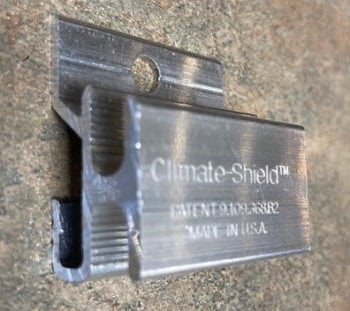
- The CS10SR horizontal starter rail is installed at the bottom of the wall assembly. The starter rail is eight feet long for easy handling and accurate leveling. The CS10SR starter rail will save you time and aggravation on the job site. Once you set the starter rail on the level, all your siding courses line up perfectly. The starter rail has pre-drilled mounting holes for quick installation and pre-drilled weep holes for quick bulk water drainage at the bottom of the wall cavity.
- The CS10VSR vertical starter rail is installed at the bottom of the wall assembly for vertical rainscreen siding installations. The CS10VSR also has predrilled holes for easy mounting and ¼” weep holes for rapid bulk water drainage.
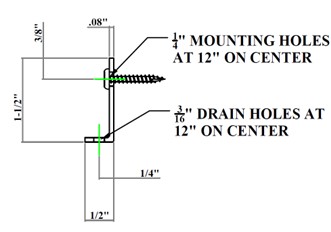
- Cor-A-Vent SV3 is a four-foot-long siding vent that works well with the CS10 system. It installs directly above either the vertical or horizontal starter rail. At the bottom of the wall cavity, it minimizes the potential for insects from entering the wall cavity (rainscreen gap). You can use the Cor-A-Vent SV3 at the top of the wall assembly, too. This helps promote top of wall ventilation and minimize insect penetration into the wall cavity.
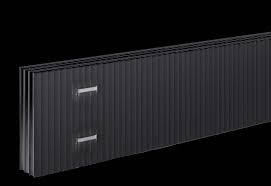
ADDITIONAL INFORMATION ON CS10 SYSTEM:
CS10 Design Details and Specifications
Looking for some great design ideas?
Download the Residential Wood Rainscreen Siding Project Portfolio today.
Climate-Shield Rainscreen Installation
The installation of the Climate-Shield rainscreen system is much simpler and less costly than other installation methods.
Installing the Climate-Shield starter rail correctly and level means all your other courses of siding will easily install level, too. Simply install your first course of wood siding level and then install your next courses of wood siding from this secure and level base.
There is no need to waste wood siding materials by cutting it to fit 16" furring strips- simply install a rainscreen clip (top and bottom) at the end each piece of siding and let it "share the rainscreen clip" with the next piece of wood siding.
Climate-Shield Rainscreen Clip Vs. Other Rainscreen Clips
A picture is worth a thousand words ...
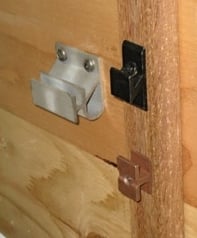
Just look at how rugged and secure the Climate-Shield CS2 Rainscreen Clip is compared to other rainscreen clips.
As you can see from the photo, other rainscreen clips require the use of furring strips to create the proper 3/4" spacing for the ventilated wall cavity necessary for proper moisture management.
The wide mounting flange of the Climate-Shield CS2 Rainscreen Clip also provides a sturdy base to ensure that wood siding is properly seated.
Protect Your Rainscreen Investment
The Climate-Shield System will provide you with security & peace of mind.
Investing in a rainscreen siding system will give you the necessary energy-savings and weather-resistance to protect your home and secure your investment. Peace of mind will follow knowing that your wood siding will last for years - thanks to helpful accessories such as Climate-Shield's patented rainscreen clip and fasteners.
Utilizing the proper rainscreen clips and fasteners is important, if you want an efficient installation and guaranteed method of protecting your wood rainscreen siding system.
Climate-Shield's accessories are made out of marine-grade aluminum alloy and are durable in all kinds of weather. And because they have been proven to last for many years, your investment will be well worth the initial cost.
How Climate-Shield Reduces Cooling and Energy Costs
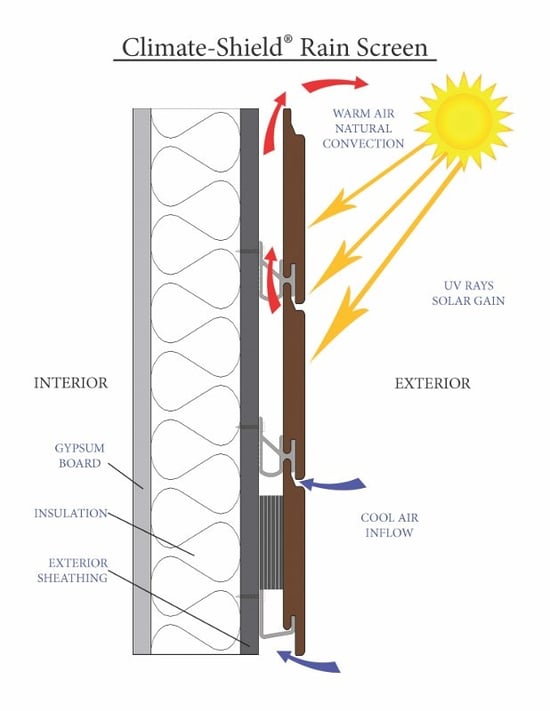
The Climate-Shield Rainscreen System provides the built-in ability to help your home, building or structure minimize solar gain during hot weather, by design.
Because the unique rainscreen system creates an open-joint, back-ventilated and pressure equalized design, hot air rises and stays away from the building envelope.
Natural convective air currents allow the rainscreen gap (wall cavity) to "breathe" and shed excess heat outside the structure. Hot air that would normally heat up the siding and transfer the heat to the building envelope, is literally carried away naturally.
A common misconception about "rainscreens" is that they are only design for rain. The truth is that this system is equally effective in hot climates, too. The hotter the weather, the more dynamic is this naturally occurring effect of convective air currents. Building scientists agree that the 3/4" wall cavity is highly effective to assist nature.
Find out More: Wood Rainscreens Not Just For Rain
Climate-Shield Helps Eliminate Unwanted Moisture
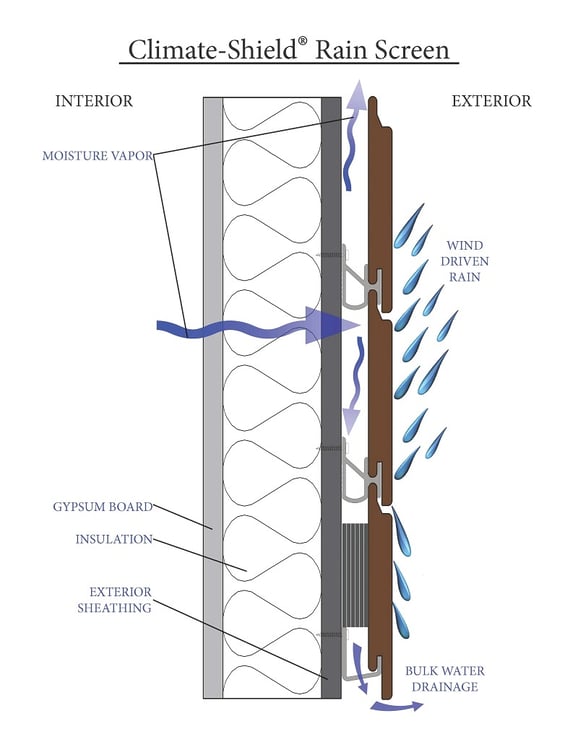 With its unique design, the Climate-Shield rainscreen system has been praised by architects, builders, engineers and property owners. The same unique system design that allows Climate-Shield to shed unwanted thermal gain, also creates a highly beneficial and healthy system to eliminate unwanted moisture.
With its unique design, the Climate-Shield rainscreen system has been praised by architects, builders, engineers and property owners. The same unique system design that allows Climate-Shield to shed unwanted thermal gain, also creates a highly beneficial and healthy system to eliminate unwanted moisture.
Climate-Shield™ Rainscreen Wood Siding System Species
Hardwood Siding Species that are appropriate for Rainscreen Siding
There are a number of wood siding species that are appropriate for rainscreen wood siding installations. High density hardwood siding materials such as Ipe siding, Cumaru siding, Garapa siding and FSC Machiche siding are excellent wood siding material options for your rainscreen wood siding installation.
VISIT WOOD RAINSCREEN SPECIES OPTIONS MAIN PAGE
Click photos below for more information about each wood species-
|
|
|
|
|
Learn More About Rainscreen Hardwood Siding Options
Rainscreen Siding Systems: Principles, History and Advantages
Ready to see if the Climate-Shield wood rainscreen system meets your project project?
Request a complementary wood rainscreen siding quote.
Climate-Shield Offers Unique Design Capabilities
Install Climate-Shield™ Siding HORIZONTALLY, VERTICALLY or DIAGONALLY
With the wide range of siding materials available for the Climate-Shield system, you can customize the species, color and style to suit your home and your budget.
Unlike other rainscreen siding clips, the Climate-Shield Rainscreen System can be installed horizontally, vertically or diagonally - easily and effectively.
|
Climate-Shield Rainscreen Wood
Siding installed horizontally
|
Climate-Shield Rainscreen Wood
Siding installed vertically
|
|
|
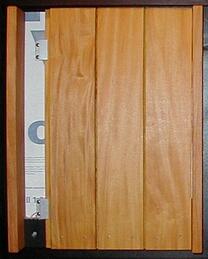 |
For even more design flexibility, Climate-Shield™ Rainscreen Wood Siding can be customized to a reflect a number of different siding profiles.
"How Climate-Shield Became the Most Respected Wood Rainscreen System"
RELATED:








